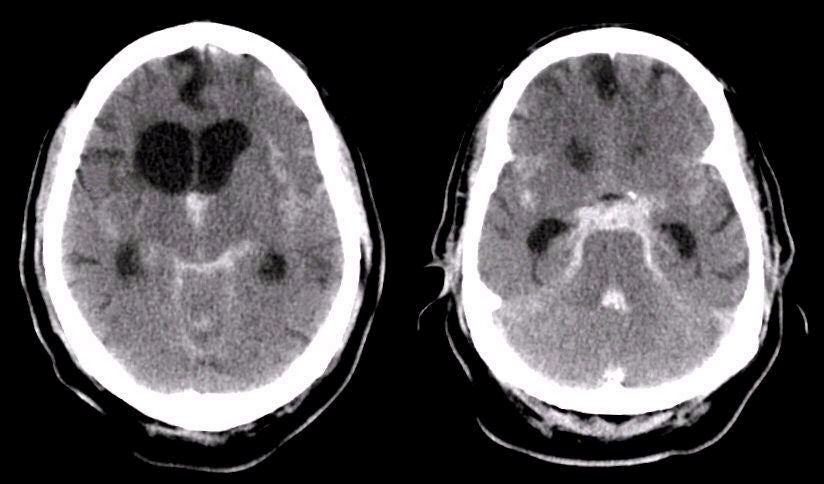
|
A 43 year-old man presented with a sudden, severe headache, nausea and vomiting. Over the next eight hours, he became obtunded and fell into a coma. |

![]()
![]()
![]()
| Non-Communicating Hydrocephalus from Subarachnoid Hemorrhage:
Axial CT scans without contrast. Note the subarachnoid hemorrhage in the basal cisterns and fourth ventricle.
Also note
the prominent hydrocephalus with dilatation of the anterior and temporal horns
of the lateral ventricles. Acute hydrocephalus is a potential complication of subarachnoid
hemorrhage, either as a consequence of impaired CSF absorption or obstruction of flow within the ventricular
system. This
situation requires emergency neurosurgery and ventricular shunting.
Hydrocephalus is recognized as enlarged ventricles out of proportion to the amount of cerebral atrophy. Non-communicating (obstructive) hydrocephalus occurs when the ventricular system is not in continuity with the subarachnoid space. Most often, the site of the blockage in non-communicating hydrocephalus is at the cerebral aqueduct, but rarely can occur at the foramen of Monro, the third ventricle, or the outlet of the fourth ventricle. Non-communicating hydrocephalus is an important disorder to recognize as it is potentially treatable by shunting. |
Revised
11/23/06.
Copyrighted 2006. David C Preston